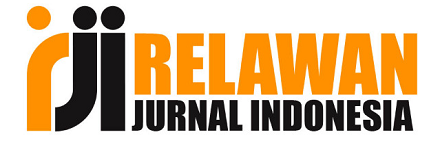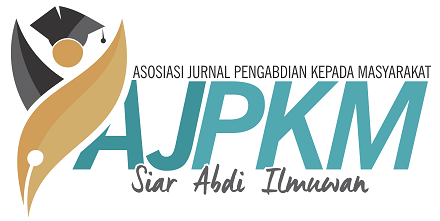Pemanfaatan Limbah Jerami Padi Di Desa Garon Kecamatan Balerejo, Kabupaten Madiun
DOI:
https://doi.org/10.33474/jipemas.v2i2.2915Keywords:
rice straw, utilisation, organic fertilizerAbstract
Greenhouse gas emissions are an environmental issue that has an impact on climate change and global warming. One of the cause is the burning of rice straw after harvest in the field. The existence of majelis taklim is not only religious facilities, and it’s as a way to community empowerment. QS. As-Sad 27 and QS Al-Anbiya 16 explains that everything created by Allah SWT with all aims and benefits. Generally, rice straw is perception as a waste, but if it utilised with science and technology will be able to improve the use of value and economic value. 82,19% and 79,45% of the members of majlis taklim have perception that utilizing of rice straw can improve their income and part of the sustainable environmental management. And 94,25% of the members of majelis taklim did not utilise rice straw and burned it in the field. They did not have skills and knowledge to utilise of the rice straw. Furthermore, training and education must be conducted regularly.
References
Andini, A., Bonnet, S., Rousset, P., & Hasanudin, U. (2018). Impact of open burning of crop residues on air pollution and climate change in Indonesia. Current Science, 115(12), 2259–2266.
Gadde, B., Bonnet, S., Menke, C., & Garivait, S. (2009). Air pollutant emissions from rice straw open field burning in India, Thailand and the Philippines. Environmental Pollution, 157(5), 1554–1558.
John, A. (2013). Alternatives To Open-Field Burning On Paddy Farms. OPTIONS Agricultural and Food Policy Studies Institute, Malaysia, 18, 1–5.
Junpen, A., Pansuk, J., Kamnoet, O., Cheewaphongphan, P., & Garivait, S. (2018). Emission of Air Pollutants from Rice Residue Open Burning in Thailand, 2018. Atmosphere, 9(11), 1–23.
Kanokkanjana, K., & Garivait, S. (2013). Alternative rice straw management practices to reduce field open burning in Thailand. nternational Journal of Environmental Science and Developmen, 4(2), 119–123.
Lim, J. S., Manan, Z. A., Wan Alwi, S. R., & Hashim, H. (2012). A Review On Utilisation Of Biomass From Rice Industry As A Source Of Renewable Energy. Renewable and Sustainable Energy Reviews, 16, 3084–3094.
M. Z, R., B, A., & Aznie C.R, R. (2012). Impact of Rice Straw Development towards Agricultural Environment and Farmers’ Socio-Economy in MADA Region, Kedah (Vol. 54, pp. 245–249). Presented at the 2nd International Conference on History and Society Development (ICHSD, Bangkok, Thailand: International Economics Development Research Center (IEDRC).
Mandal, K. G., Misra, A. K., Hati, K. M., Bandyopadhyay, K. K., Ghosh, P. K., & Mohanty, M. (2004). Rice residue-management options and effects on soil properties and crop productivity. Food, Agriculture & Environment, 2(1), 224–231.
Muliarta, I. N. (2018). Utilization Burning Rice Straw And Crops Planted. International Journal of Life Sciences, 2(3), 142–150.
Rhofita, E. I. (2016). Kajian Pemanfaatan Limbah Jerami Padi di Bagian Hulu. Al-Ard: Jurnal Teknik Lingkungan, 1(2), 74–79.
Tung, N. S., Cu, N. X., & Hai, N. X. (2014). Impact Of Rice Straw Burning Methods On Soil Temperature And Microorganism Distribution In The Paddy Soil Ecosystems. ARPN Journal of Agricultural and Biological Science, 9(5), 157–160.
Downloads
Additional Files
Published
How to Cite
Issue
Section
License
.









